Top Secret: Kraft Mac-N-Cheese Ditches Artificial Flavors
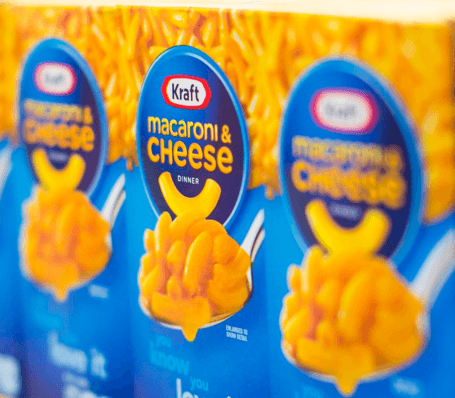

One of the greatest comfort foods of all time is Kraft Macaroni and Cheese. First launched by James Lewis Kraft and his eponymous company during the Great Depression, sales took off during World War II because of food rationing -- shoppers could snag two boxes with one ration coupon. Long called Kraft Dinner in Canada, those gooey and neon-colored noodles still resonate with people of all ages on both sides of the border and overseas, even as supposedly healthier and organic versions have given Kraft Mac-N-Cheese a run for its money in recent years.
Sales are still strong at approximately half a billion dollars annually. With success, however, comes scrutiny, as the now Kraft Heinz Co. has been called out on a range of criticisms from its palm oil procurement to the use of artificial colors.
Kraft Macaroni and Cheese had long included the artificial colors yellow 5 and 6. The U.S. Food and Drug Administration (FDA) says these additives are safe, but a bevy of advocates say they may cause health risks that range from tumors to hyperactivity in children. One can argue the science and veracity of these studies, or non-studies, but changing consumer preferences have proven to become stubborn market realities. Last April, Kraft responded to the pressure coming from all directions and said it would remove all food preservatives and artificial colors from its original “blue box” Mac-N-Cheese product.
And the company followed through: In fact, it did so last December, but without making any splashy announcement. Kraft Heinz ditched the artificial yellow colorings in favor of dyes derived from annatto, paprika and turmeric. The changes were on those iconic blue boxes the whole time, but they fell under the radar until the company made an announcement last week.
Soon Kraft will start highlighting the changes on its Mac-N-Cheese boxes, hand-in-hand with a social media campaign on outlets including Twitter. The company is encouraging users to share their experiences using the hashtag #didntnotice, which at press time looked to be more of a success with minimal snark directed at Kraft. For those who are interested, there is a “Twitter Party” at noon EST on Wednesday. Meanwhile, Kraft has promised to dole out gifts including boxes of the product, T-shirts and, for a lucky winner, an oversized macaroni-inspired body pillow.
Kraft Heinz is following the lead of several of its competitors that have also promised to eliminate artificial colors from their products. Mars, Inc. recently announced that it would phase-out the use of such food dyes from its food, candy and chocolate products, including those used in its popular M&M candies. Last year, Nestlé USA pledged to remove artificial flavorings and colors from over 250 products. Restaurant chains, including Yum Brands’ Pizza Hut and Taco Bell, as well as Panera Bread, have also jumped on the natural food-coloring bandwagon.
This trend shows the new reality for food companies: After decades of bombarding consumers with marketing messages, consumers have embraced the power of social media, blogs and online petitions and hence are returning the fire -- leaving companies no choice but to change how they conduct business and manufacture their products.
Image credit: Kraft Foods Group
Energizer Announces New Batteries With Recycled Content
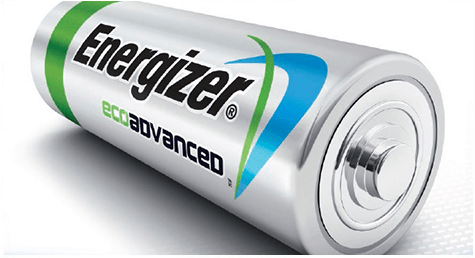

A major part of the transformation of the world’s energy system is the electrification of nearly everything. Between the increasing popularity of electric vehicles and all kinds of mobile electronics, that means a lot more batteries.
Other than fuel cells, there is no competitor to batteries, beyond those devices that can be charged directly by the sun. And while fuel cells will find a few niches where they can compete effectively, as they do today in forklift trucks, the foreseeable future belongs, by and large, to the battery.
A great deal of research is being pursued to make a better battery, one that is lighter and smaller, with a higher storage capacity, and the right power characteristics to meet the various demands to which it is applied. One problem with batteries that has received less attention is the question of disposal. What do you do with all of these things when you’re done with them?
The most widespread battery today is the one found in conventional cars: the lead acid battery. Because lead is so dangerous, a comprehensive system has been put in place to make sure all of that lead is safely recovered. In fact, lead acid batteries are the No. 1 most recycled item in the world, achieving a 99 percent recycling rate, far more than plastic bottles, tires or anything else.
Other batteries have not been nearly so well cared for. Alkaline, the most popular non-rechargeable battery that has ruled the roost for several decades, is not considered hazardous waste by the EPA, even though the leachate from them can be harmful to wildlife. Only five states require them to be treated as hazardous. Considering the fact that they are non-rechargeable and must be replaced regularly, there are literally billions of them out there.
But good news is on the horizon. Energizer just announced a new rechargeable battery, the Energizer Recharge battery, that contains 4 percent recycled content by total weight. The battery is available in AA and AAA configurations. The company previously announced its Eco-Advanced Alkaline battery, which also contains 4 percent recycled content. While 4 percent is truly a small amount, it does represent a positive step while also demonstrating that the company is taking this issue seriously. It was apparently enough to earn Energizer a Product of the Year Award in the sustainability category in TNS consumer surveys both in the U.S. and the U.K.
“Energizer Recharge is another step forward in our vision that all Energizer batteries contain some amount of recycled battery materials," said Michelle K. Atkinson, chief consumer officer at Energizer. "Our scientists partnered with rechargeable suppliers to build on the knowledge and experience from Energizer EcoAdvanced and identified a process to use recycled content in our rechargeable batteries without sacrificing performance, an idea previously not thought possible by industry experts."
In Energizer's proprietary process, high-performance active ingredients are obtained from hybrid-electric vehicles, which also helps to create a market for those batteries at the end of their useful life. The material receives further refining before being added to the smaller batteries. Hopefully this represents a small but not insignificant first step on the road to a zero-waste scenario for batteries.
Image courtesy of Energizer
National Parks Face Over-Crowding, Degradation


By Daniel Matthews
It’s a conundrum. You want to find nature and get away from crowds of people, but other people do too. As the population grows, the very urge to get away and find the quiet, untouched places brings millions of people flocking to where you’re trying to go to get away from them (and they from you).
2016 marks the centennial birthday of the National Park Service (NPS). To celebrate, the NPS is urging you to Find Your Park. But one thing’s clear: They’re not ‘your’ parks. They’re playgrounds for millions of people in a soaring population.
Each of the most popular National Parks had over 3.5 million visitors in 2015. For all of them, attendance has continued to rise since 2005. The Great Smoky Mountains, on the border of North Carolina and Tennessee, hit an all-time high of 10.7 million visitors, a rise of 17 percent.
As with any issue, there are multiple sides to the over-crowding of National Parks. On one hand, as Zion National Park’s chief of commercial partnerships and planning Jack Burns says, "Zion was never designed to see, literally, millions of people." The crowding makes it hard for attendees to enjoy themselves. And, the more people, the more littering and pollution — the more maintenance the parks need.
The price-tag for that maintenance, for all the parks combined, is $11.9 billion. Congress has been able to appropriate around $3 billion per year — but that’s not enough. Combined with entrance fees, donations, and concession sales, appropriations still can’t cover the rising cost of wear and tear.
On the other hand, communities benefit from the influx of tourists. One report estimates the National Parks chipped in nearly $30 billion to the economy in 2014.
Northwest Montana’s Glacier National Park partners with Glacier Park, Inc. to provide lodging in and around the park. This funnels hospitality and recreation business to the nearby town of Whitefish, which has seen a boom in commerce coinciding with the rising attendance at the park. In turn, Whitefish’s population continues to rise.
Glacier offers shuttles on its famous Going-to-the-Sun Road, which spans the width of the park. Shuttles cut down on vehicular traffic. During peak visitation months, it’s incredibly hard to get a parking spot inside the park because of the crowds. People line up to take pictures of the mountain goats at Logan Pass, which marks the Continental Divide.
Glacier’s ecosystem might not be able to support the influx of people for very long. As the population grows and attendance skyrockets, the glaciers that lend Glacier its name continue to shrink. According to the NPS, global climate change scientists predict all of Glacier’s glaciers will be gone by 2030.
In other National Parks, such as Denali (which is also a wildlife preserve), you can’t take a car past a certain point if you want to get to the backcountry. This prevents overcrowding and degradation of that region. In order to get to the lodge, you either have to hike in, fly, or take a bus. Similarly, Zion has a mandatory shuttle system because of just how bad pollution and traffic were in 2001.
A solution to the overcrowding problem is not easy to find. Some have proposed a reservation system (in which you’d have to reserve a spot). But that would counter the come-one-come-all spirit exemplified by the Find Your Park campaign. As far as the maintenance problem goes, one idea is to create more National Parks. Then, traffic would be diverted from the parks that are run down. Also, more parks would mean more environmental preservation efforts. But Holly Fretwell, a research fellow at the Property and Environment Research Center, says this is a bad idea. The NPS wouldn’t be able to keep up with the additional parks. If it can’t handle what it’s got going right now, the agency won’t be able to handle more, because of low funding and lack of personnel.
Another idea is to invite more public-private partnerships. Glacier National Park’s partnership with Glacier Park, Inc. is an example of this, but only in the lodging sector. Other parks such as Grand Canyon, Yosemite, and Yellowstone use private sector companies to operate lodging, food, retail, and other commercial operations. The idea is for companies to step in and run the day-to-day operations, including maintenance.
This, however, would open the door to the corporatization of our parks. Advocates point out the parks would still make the rules, while private organizations would just manage the day-to-day.
Our political system shows what can happen when private money influences public decisions. Companies tend to find any way they can to milk money out of their investments. The NPS would have to impose strict regulations to make sure this wouldn’t happen. And what type of tax loopholes could companies find while profiting off of public land and tourism?
The NPS isn’t putting on Find Your Park, with its fee-free entrance days, frivolously. The centennial celebration will draw attention to how valuable our parks are, as well as how much we need the NPS to maintain them. Hopefully, it will spur a national conversation about conservation.
Photo credits: 1) Lan Kim, Wikimedia Commons 2) Carol M. Highsmith, Wikimedia Commons
The Power of Transparency


By Daniel Kraft
Despite honest intentions, transparency is rarely easy. It’s one thing to promise it — and another thing entirely to deliver on that promise. And that responsibility gets more difficult with dispersion. As a leader, you’re not only responsible for your own words and actions, but also those of your team.
Why be transparent?
For me, transparency is all about staying sane. The amount of emotional energy it takes to maintain multiple realities, one public and one or even more internal, is draining. Transparency is also about productivity, as it saves you the energy and time you would otherwise spend on elaborate deflections, allowing your team to devote that energy to things that truly benefit the organization.
Prioritizing transparency is the first step toward building credibility. If your actions match your words once, no one will take much notice. If they match over and over again, your people will see that you deliver on your promises. A culture of transparency doesn’t require you to keep everything out in the open, but as former U.S. Secretary of Defense Robert M. Gates once said, things are too often “kept secret because of habit, culture, internal power politics, and a fear of embarrassment or accountability.”
Even if you don’t need people’s trust to do business right now, the day will come when you’ll need a favor. Whether your company goes through a tough financial stretch or you have to make an unpleasant announcement, you want to have a reserve of trust to draw on. Building trust in times of success is much easier than trying to do so in times of unease.
SEO marketing company Moz is a great example of what a transparent culture can accomplish. When the business went through a rough patch and the CEO decided to step aside to deal with his depression, it could have spelled the end for a promising company. Instead, Moz remained open and honest about the challenges it faced, held its values high, and earned the trust of its investors to fund another round to take the company to the next level.
Creating a culture of transparency
We sometimes look up to those companies that adopt transparency and wish we could model those behaviors. But in my talks with those leaders, I’ve learned that creating a culture that values honesty and getting other executive leaders and managers on board doesn’t happen overnight. Follow these tips to create more transparent leadership and get moving in the right direction:
1. Be real. Transparency sometimes means not looking as good as you’d like. Don’t waste energy trying to be something you’re not, even if that means you’re not as appealing as others. Believe me, it’s incredibly painful to host a company meeting and share that you lost some people or your numbers suck. But unless you’re the master of time and space, changing reality isn’t really an option.
2. Say, “I don’t know.” As the leader, you get grilled on every aspect of your company, even ones you know little about. Sometimes, this leads to you guessing or making promises that you will have a hard time trying to meet. If you don’t know the answer, say so. Better yet, if you actually learn the answer and follow up, you can earn a lot of credibility with the people asking.
3. Admit mistakes. You sometimes have to make a bet, looking great if you land a win and looking like a fool if the bet doesn’t pay off. Admitting that something didn’t work and explaining the next steps sets the tone within your organization — if the boss can be wrong, so can everyone else.
4. Actively support your team. Occasionally, customers reach out to me to complain about an employee. Even if that customer’s complaint is valid, you can’t throw your employees under the bus and still get respect. And this goes both ways — a team that has your back is priceless.
5. Engage and communicate. Transparency requires communication. Be visible to people within your company by holding town halls, writing blogs, posting on social networks, and talking openly on topics like strategy, values, organizational changes, and company performance. You might think you already communicate, but ask your teammates if they agree. You might get a different answer.
Transparency doesn’t always come naturally. And for me to write this is almost like addressing my own shortcomings. We’re still working on our own transparency, and when the truth is unpleasant or inconvenient, the temptation to hide is still strong. But the last few years have taught me that building a culture based on transparency helped my company build the strength to handle challenges openly and as a team.
Image credit: Pixabay
Daniel Kraft is the president and CEO of Sitrion. Sitrion provides millions of people with a mobile and socially enabled workplace that’s tightly integrated with SAP, Microsoft SharePoint, Office 365, and Salesforce. Daniel is a public speaker on topics involving employee engagement and productivity and was featured on TEDx.
With an Eye on the Future, Ford Launches New Mobility Subsidiary
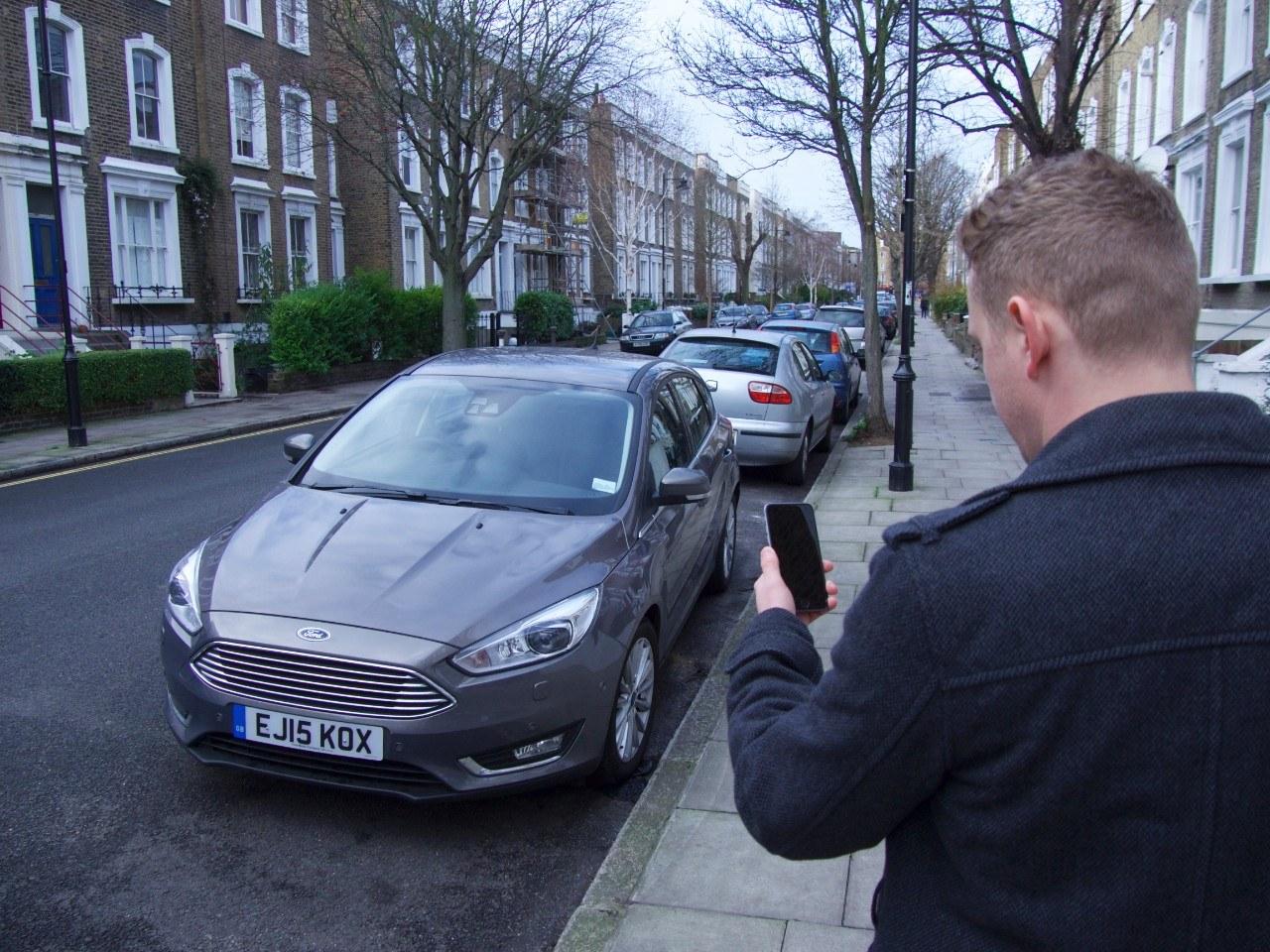

The concepts of car ownership and driving are changing. Plenty of surveys and research indicate that teenagers are delaying that moment when they score their driving licenses, a remarkable shift from prior generations where passing the driver’s test at age 16 was the norm. More consumers are forgoing car ownership, choosing instead to rely on ridesharing services such as Uber and Lyft or opting for short-term rental services like Zipcar. And while multiple reasons explain why silver, black and white are the predominant car paint colors, one factor is that the millennials who choose to purchase cars would rather spend money on a technology package than on snazzy jewel colors.
The automakers are getting a clue. Ford Motor Co. announced last week that it formed a new subsidiary, Ford Smart Mobility LLC, to develop and invest in new mobility services for automobiles. According to Ford, this structure transforms its business model to become both an automobile and a mobility company. The new subsidiary will have new offices in Dearborn, Michigan, and in Palo Alto, California.
Ford insists that its mobility-focused subsidiary will function as a typical Silicon Valley startup company. Adopting buzzwords common in the Bay Area, the company’s announcement talks about the mobility "solutions" this new venture is expected to generate, as well as how it will “collaborate” with other startups and technology firms.
Ford Smart Mobility’s kickoff comes one year after the company announced its long-term mobility plan at the annual Consumer Electronics Show in Las Vegas. The program has five pillars. The first is connectivity: Ford will keep improving SYNC, its entertainment and communications system. On the mobility front, the company has run what it calls “global mobility experiments” to test new products and technologies, including a predictive parking system and a London car-sharing program with guaranteed parking in congested areas. Ford is also ramping up research and investment in autonomous cars, while insisting that it has the largest fleet of test vehicles in the industry — and late last year it inked a partnership with Google. Cooperation with IBM is one example of how it is trying to incorporate more data and analytics in its transportation technologies. Finally, echoing the marketing messages of Apple and Nike, Ford is burnishing its credentials as a lifestyle company by proclaiming that it is working on improving its consumer experience.
Other automakers are cognizant of the evolving relationship between consumers and cars and the fact that more people view the automobile as not necessarily something to own, but as a service. Earlier this year, GM announced it would invest $500 million in Lyft to expand the ridesharing service’s number of vehicles and develop a partnership on autonomous vehicles. BMW’s 5-year-old plug-in electric vehicle brand, BMW i, has its own startup culture that has created a bevy of smartphone apps and electric vehicle charging locator services.
Henry Ford would be gobsmacked by how the industry he kickstarted has evolved. In 1928, a presidential campaign slogan boasted “a chicken in every pot and two cars in every garage.” Fast-forward almost a century later, and many Americans do not necessarily consider a house with a garage their version of the American dream (and yes, going vegetarian is mainstream). This reality gives the automakers no choice: Urbanization, unstable fuel prices, the love for technology and consumers’ burgeoning desires to be free of things and rely on services have forced these companies to rethink how they will stay relevant in the 21st century. Ford’s mobility plunge is just one tiny step toward the vastly different future of transportation.
Image credit: Ford
DARK Act Threatens Consumers' Right to Know Food Content


Labels. You learn from them that packaged foods you buy have certain amounts of calories, fat and sugar. You depend on them for meal planning, portion control and general nutrition. But you cannot count on food labels to tell you whether the item contains genetically modified organisms (GMOs). GMOs are created in a laboratory, where various genetic material from other organisms, including bacteria, can be inserted into food in a way that never would have occurred in nature. The debate continues about their long-term safety as well as the increased amount of herbicides required to grow GMO crops.
A proposed federal law would strip states' rights to require GMO labeling and instead make all such labeling voluntary. The most recent version of this law has been introduced in the U.S. Senate's agriculture committee. It is similar to a measure the U.S. House passed in 2015 called the Safe and Accurate Food Labeling Act.
Critics are concerned that if this legislation becomes law, consumers will lose their right to know what is in their food. Consumer watchdogs are so concerned about this legislation that they renamed it the DARK Act to indicate the lack of information it provides.
TriplePundit asked the chairman of the Just Label It initiative and founder of organic dairy company Stonyfield Farm to explain why the DARK Act looms so large in the food debate these days. Here's what Gary Hirshberg had to say:
TriplePundit: The Safe and Accurate Food Labeling Act sounds like a great thing for consumers. Why is this dubbed the DARK Act instead by opponents?
Gary Hirshberg: The name of the bill is intentionally misleading. The reason those of us who support mandatory GMO labeling have dubbed the bill the Deny Americans the Right to Know, or DARK Act, is because it would prevent states from requiring packaged food with genetically engineered ingredients to be labeled as such while also barring the Food and Drug Administration from doing so. It would keep American consumers in the dark about whether their food contains genetically engineered ingredients.
TriplePundit: Is there potentially a modified version of the Safe and Accurate Food Labeling Act that could protect consumers on the federal level?
GH: The only federal alternative to the DARK Act would be a bill that requires clear, on-package GMO labeling. We have been, and continue to be, willing to work with industry to determine the best way to formulate that label so that they feel it presents the information in a non-judgmental manner that is easy to implement, but high-tech solutions, state preemption or voluntary labels are not the answer. Sen. Jeff Merkley is introducing a bill that we could support.
TriplePundit: Some states like Vermont already plan to enact labeling laws for food with genetically modified organisms. How could a new federal law like the DARK Act threaten what states are already doing to inform consumers about their food?
GH: There is long-standing precedent for states to determine their own food labeling practices beyond the federally regulated Nutrition Facts panel and ingredient list. States already require state-specific food labels for everything from “cottage foods” to butter and cheese grading. Yet, the DARK Act would wipe away Vermont’s law to require GMO labeling -- and the laws of other states that have passed or are considering passing labeling mandates modeled after the other laws that are already in the books. There are even some implications of the bill that could impact the way states regulate how GMO crops are grown.
TriplePundit: You have explained previously that mandatory labeling of GMOs in food does not necessarily have to signal a safety issue, simply a piece of information the consumer has a right to know. If big food companies believe there is no consumer safety issue, why so much opposition to mandatory labeling?
GH: That’s a great question and one that frankly puzzles me. As a business owner, I am proud of the products my company makes and value transparency. The fact that Big Food is fighting so hard against mandatory labeling — when nearly 90 percent of Americans regardless of age, party or gender say they want the right to know — begs the question: What are they trying to hide?
Sixty-four countries around the world require mandatory labeling of GMOs. Why shouldn’t Americans have the same access to information about how their food is grown and produced?
TriplePundit: You created a brand that uses the USDA Organic seal to assure consumers there are no GMOs in Stonyfield products. For those foods that are not certified organic, could state laws do enough to help consumers sort through GMO and non-GMO choices?
GH: States laws, like the one in Vermont, are aiming to clear up confusion in the marketplace. For example, a recent poll showed that many consumers don’t realize certified organic products don’t contain GMOs and others mistakenly believe that products labeled “natural” are GMO free. "Natural," as you may know, has no clearly defined meaning on food packaging. A mandatory label that indicates the presence of GMOs will help to clear up that confusion caused by the current voluntary system.
Learn more about consumer protection efforts to get GMOs labeled at Just Label It.
Image courtesy US Department of Agriculture
Minneapolis Puts Natural Gas and Coal to Work for Clean Energy


Back in October 2014, TriplePundit took note when the city of Minneapolis, Minnesota, launched the Clean Energy Partnership, a first-of-its-kind venture between the city, its natural gas provider CenterPoint Energy and its electricity provider Xcel. Less than two years later the gamble has paid off with accolades for all three partners, for enabling Minneapolis to reduce greenhouse gas emissions and increase energy efficiency.
Aside from helping to reduce emissions at the consumer end, the Clean Energy Partnership is also notable in that it supports the green branding of two major fossil fuel marketers that are beginning to transition to renewable sources.
The Clean Energy Partnership
The Clean Energy Partnership was officially announced in October 2014, when Minneapolis leveraged its franchise agreements with CenterPoint and Xcel to support more clean power and energy efficiency.Franchise agreements establish the conditions under which utilities can use streets and other public property to run their lines. Generally they involve a fee that utilities pass along to their customers. In this case, Minneapolis asked for conditions that reflect the city's Climate Action Plan, including:
"Giving customers additional choices about the way their energy is generated.""Increasing residential and business use of new and existing energy-efficiency and renewable-energy programs to help consumers control energy costs and reduce greenhouse gases.
Supporting the development of renewable energy in the city and in Minnesota."
"Exploring and implementing ways for the City to reduce its own energy use and increase its use of clean and renewable energy."
Innovation award for Clean Energy Partnership
Minneapolis has long been recognized for its exemplary public park system, and now it's on the map for its innovative approach to clean power and energy efficiency.
Last Friday, our friends over at Midwestern Energy News reported that the Clean Energy Partnership earned a Climate Leadership Award from the U.S. Environmental Protection Agency, in the category of Innovative Partnerships. Relatedly, in January Minneapolis and Xcel also won an award from the U.S. Department of Energy for a new energy-saving software program for building owners.
As described by Midwestern Energy News, the new software provides an excellent example of the ways in which the Clean Energy Partnership goes to work for both energy consumers and providers in the context of a forceful legislative framework for reducing greenhouse gas emissions:
"... The novel Web-based platform the partnership received recognition for in Washington allows building owners with multiple tenants to see how much energy an entire structure uses ... ""... Part of the reason for developing the software – now part of the DOE’s Better Buildings Energy Data Accelerator platform – was to help building owners comply with a city mandate that requires disclosure of energy use for structures of 50,000 square feet or more ..."
The two utilities have embarked on a variety of related new initiatives including a modestly-priced, flat-fee "Home Energy Squad" audit for home owners and an initiative to provide free low-flow shower heads. They also started a pilot project to offer a combination of free audits, corrective action and no-interest loans for income-eligible households, including households in multi-family buildings of up to four units.
Onward and upward for clean energy
In our 2014 report on the Clean Energy Partnership, TriplePundit noted that for Xcel, the agreement offered a non-litigious alternative to the threat of a municipal takeover.
The takeover was being pushed by clean-energy advocates who argued that the pace of Xcel's clean-energy transition was unacceptably slow.
Around the same time, clean-energy advocates in Boulder, Colorado, were making a similar case against the company. In 2011 the city passed a ballot measure approving a takeover, and by 2013 the mounting pressure had already motivated Xcel to increase its clean-energy sourcing.
Despite some progress by Xcel on that score, Boulder is pressing ahead with the takeover, though a jurisdictional quirk seems to have stalled the process for the time being.
For the record, Xcel's energy mix in Minnesota still includes 46.1 percent coal and 24.1 percent natural gas. However, wind is edging up at 12.2 percent. The only other significant source is nuclear at 12.2 percent, with hydro, biomass, solar and "other" making up the rest.
As a natural gas company, CenterPoint is pretty much tied to fossil sources for its service grid, but among its contributions to the Clean Energy Partnership is a robust rebate initiative for income-eligible energy-efficiency improvements. The company has also introduced a rebate program for biogas producers in Minnesota.
Photo (cropped): via Minneapolis Park and Recreation Board.
The State of Corporate Goodness: 2016 and Beyond
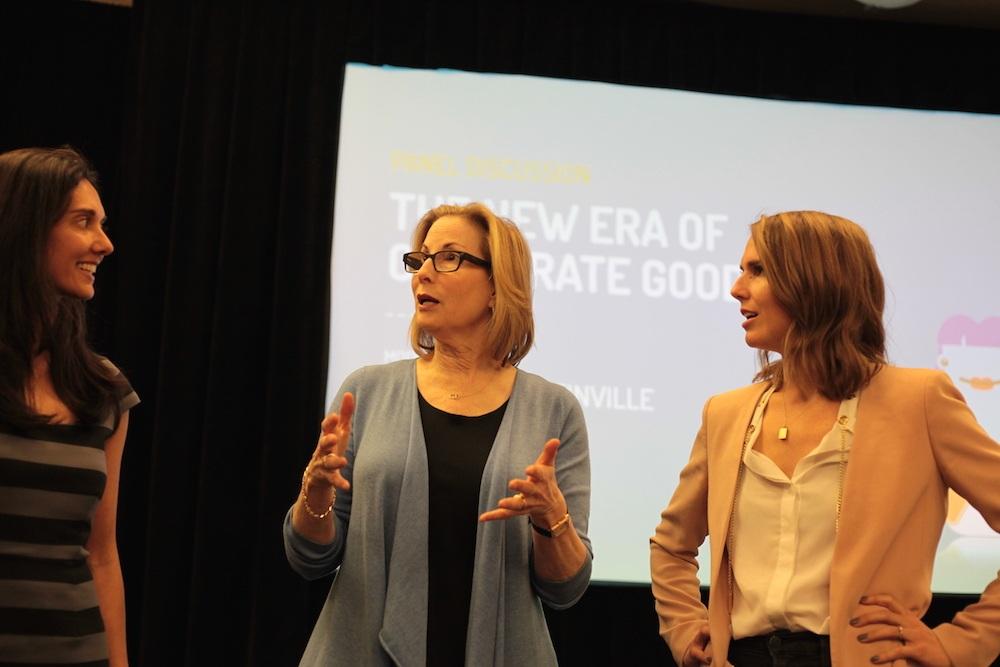

In February 2016, users of Benevity's SaaS tool gathered in San Diego to discuss the future of corporate philanthropy. TriplePundit was a media partner of the event. You can follow our coverage here.
Last month in San Diego, business leaders from the U.S. and Canada gathered to discuss the future of corporate philanthropy. They all had one thing in common: their firms use Benevity's industry-leading SaaS solution to manage their 'Goodness,' which Benevity refers to as all of the behaviors an employee can engage in that drive greater affinity with their companies while making a difference in their lives, communities and the world at large.
Once considered a mere box to check, corporate philanthropy -- or 'Goodness' -- is fast evolving into an essential building-block for a company's culture and success in the 21st century. Everyone from employees to clients to consumers want to know what businesses are doing to improve the communities in which they operate. This is especially so with millennials and Generation Z.
With all of these Goodness experts under one roof, plenty of best practices were bandied about, and attendees came away with a better idea of how to leverage corporate philanthropy to create an engaged and diverse workforce, in turn generating an authentic brand and enhanced reputation.
Authenticity is king
With the advent of social media and the 24-hour news cycle, companies are fully visible and exposed. Sure, they can put on a good face in their public relations. But chances are, if they have skeletons in their closet, it won't be long before customers find out. In short: Authenticity is king in the digital age. Leela Stake, SVP of corporate responsibility and global impact for communications firm FleishmanHillard, said her company often analyzes something she calls the "authenticity gap"
"What we found is that there's been a growing divide between brand and reputation: What companies say about themselves is often very different from people's experience with them," Stake explained. "So, how do you bridge that gap?"
FleishmanHillard analyzed nine drivers of good corporate reputation and found that only half of them relate directly to a company's products or services. The rest touch on things like how the company treats its employees, the environment and the communities in which it operates, she continued.
With that in mind, adopting corporate Goodness programs -- and communicating them effectively to all stakeholders -- moves beyond a nice-to-have and into a vital component of maintaining a good reputation among customers, employees and even job recruits. "Taking Goodness programs outside of a silo and looking at them as a driver of corporate reputation is really important."
'Little wins' are key to C-suite buy-in
Penny Zuckerwise, founding head of corporate social responsibility for investment and financial services firm Guggenheim Partners, has some advice for folks hoping to earn C-suite buy-in for corporate Goodness programs: Start slowly and build up -- one little win at a time.
"Don't think that you have to come up with something that's absolutely awe-striking to be able to get engagement," Zuckerwise advised. "Try to learn about the senior members of your team -- what creates emotional resonance with them?"
Once you learn more about what makes your firm's top leadership tick, use this information to plan a small event like a volunteer day or a social media campaign. Utilize not only money, but all of the tools in your toolbox, from your employees to your client relationships -- what Zuckerwise calls "creative capital." As buzz spreads around the office and employees begin to take notice of these new Goodness programs, the folks in the C-suite will take notice, too.
"If you have a couple of little wins and you start from the bottom up, that kind of creative capital will get to the C-suite, and it will make the C-suite players feel good about what they're doing -- it will engage them."
Leverage Goodness to engage diverse talent
"When I look at corporate Goodness programs, they really are a tool to attract and retain talent," said Rachel Heffner, diversity, inclusion and innovation catalyst for Intuit. "At the end of the day, our workforce is changing; our population is changing. So, we need to look at how we can use our corporate Goodness programs to engage more diverse workforces."
To pull off this feat, Intuit uses its giving program data and annual employee survey to learn more about what causes matter most to its team, Heffner said. Ask questions like: What are employees passionate about? Do they feel included in corporate Goodness programs, and what more would they like to see?
Ideally, the demographics of your company should match those of your customers, Zuckerwise added, using Verizon as an example: Around 60 percent of Verizon's employees are female or minority, which is about the same percentage of women and minority consumers who buy the company's goods and services. The best workforces, Heffner explained, are the most diverse workforces -- and understanding what makes your employees tick is key to creating a corporate culture that attracts candidates from all walks of life.
Focus on your values, but give employees broad choice
"The problems of the world today are too complex for any one sector to solve. So, it's a missed opportunity for businesses to not be thinking about what they are uniquely qualified to do to move the needle on important issues," Stake explained. "That said, it's also important to recognize that ... different employees have differing perspectives and passions, and you want to allow room for choice."
So, for example, if you're working on a matching gift program at a food company, your firm may want to emphasize its work with hunger relief because it naturally meshes with company values (what many call a ‘vertical’ approach). But some employees may be more passionate about education, the environment, autism or another equally worthy cause. So, while you want to be sure to include plenty of hunger-relief charities in your matching-gift solution, it's also important to give employees the option to donate to other nonprofits that more closely align with their values. This creates ‘horizontal’ engagement.
Stake pointed out that enabling choice often piques employees’ interest and gets them onto the tool. Then, you can use the tool’s communication elements to share your company's focus on and passion for hunger relief efforts, engage employees and invite them to get involved in the business’ priority initiatives.
From CSR to PSR
A complement to the element of choice is creating a sense of ownership on the part of employees and crafting a culture in which they feel personally aligned with the company's Goodness missions.
"We talk a lot about corporate social responsibility or CSR, and one of the things that we're adopting at our firm is PSR, personal social responsibility, and really fostering that through our matching gift program," Zuckerwise said of her company, Guggenheim Partners.
Through the program, Guggenheim gives each employee a $100 gift card to award to the nonprofit of his or her choice. "We have 2,800 employees," Zuckerwise explained, "but we touch 1,000 nonprofits through that program. And employees get to choose and to give to whomever they like, so that PSR piece really engages people."
Employees expect to be involved
"In parallel to the things that we're seeing in the technology sector and how consumers are so involved and a part of the products that are actually being created, when it comes to engagement programs, employees expect to be a part of it," said Nicole Campbell, principal of Goodness consulting for Benevity. "They expect to co-create or are hoping to shift in that direction."
"Engagement is a must-have for many employees," Campbell continued -- saying community impact opportunities are especially crucial for companies looking to woo millennial employees. A 2014 PwC study found that more than half of recent college graduates are seeking a company that has CSR values that align with their own, and 56 percent would consider leaving a company that didn’t have the values they expected. Subsequent studies back up this notion that millennial employees are seeking purpose, not just a paycheck.
One thing is clear: We are in a new era of corporate Goodness that is becoming a core driver to business success.
Learn more about how Benevity engages people in Goodness.
Image credit Edison Miclat for Benevity
How America’s Recycling Crisis Threatens You
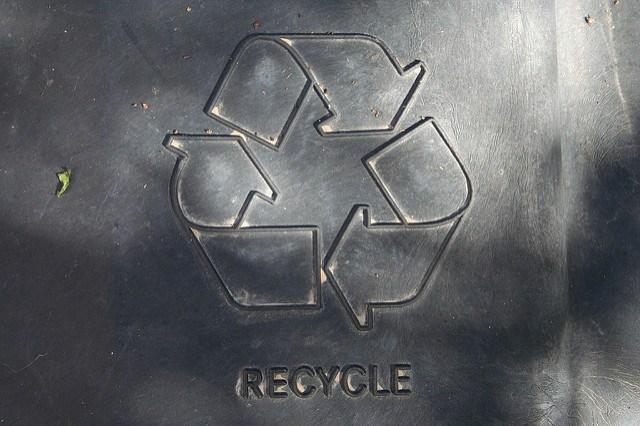

America is going to trash. We may feel guilty about it. But out of sight, out of mind. That is the state of recycling today in America.
Even California, America’s greenest state, is at the tip of the trash can on this national trend. California can proudly point to recycling 19 percent of the nation’s beverage containers. But in just the last year, a third of the state’s recycling centers have closed.
The global crash in commodity prices is one of the two major reasons reason why recycling economics have collapsed. Slow global economic growth is depressing all commodity prices. The price of PET plastic is less than half its 2011 levels. Aluminum prices have fallen over 40 percent during this same time period. It is now cheaper for beverage container companies to use new plastic rather than recycled plastic.
The second major reason why recycling is economically threatened is because consumers and businesses love the idea of trash being government’s responsibility. The economic equation that recycling is trying to overcome is: Make + Consume + Toss = Someone Else’s Problem.
When the government attempts to assign a cost to this equation, then it becomes a problem for consumers and businesses which they strongly resist. In California’s case, government fees collected for recycling have always had tedious political support. With the decline in commodity prices they are now insufficient to support mass recycling.
The result is that the economics of recycling now threatens our beliefs, the environment and our wallets.
Our love of trash is causing recycling to fail
The consumer love of our disposable economy is the foundational reason why recycling is failing. We buy, we consume and then we throw away. The consumer benefits of a throwaway economy are huge. Imagine if trash was not priced as a free good. Imagine how you would shop if the environmental impacts were included in the prices for goods and services. This would reshape what we buy and how we shop.
Such a commercial system would financially empower the concept of cradle-to-consumption-to-cradle, where goods are manufactured to be recycled and repurposed. The result would be less trash, better products and increased national competitive advantage gained through more efficient use of resources.
Businesses are also conflicted over waste recycling
Businesses are also conflicted over recycling. Imagine taxing businesses for the waste stream created after consumption. This would reshape most businesses and their business practices. Few businesses would support such a plan.
Yet businesses are pioneering zero-waste practices. They are doing so for two reasons. The first is that it is proven to make money. Companies like Walmart and GM have proven that zero-waste best practices can generate hundreds of millions of dollars in annual savings.
The second reason why businesses support recycling is that it enhances a business’ brand. The recycling logo is one of America’s most recognized and trusted logos. A recycling bin in front of a store is viewed by consumers as a sign of business integrity.
But the bottom line of business is, well, the bottom line. Trash created through consumer consumption is not recorded as a cost on a business’ income statement or as a liability on its balance sheet. Trash generated from consumption is a free good for businesses.
A sustainable consumption economy
Trash is not free. It is a waste of resources. This is harmful to economic productivity. It is harmful to the environment. Trash is an externality or societal cost not captured by production or consumption.
America is beset with externality costs because 70 percent of our economy is based on consumption. The externality costs of this economic model are now measurable. One such cost is climate change. Another is a stagnant economy seeking breakout productivity gains achieved through more efficient uses of resources and people.
The externality costs of our consumption economy can now be measured by their impacts on people. Consumption has made the boomer generation the fattest generation in history. It is projected that this consumption economy where externality costs tied to sugar, fat and sat are ignored will result in 50 percent of Generation Z, the first generation born in the 21st century, being obese.
The frustration for this economist is that we can have our cake and eat it too. We can have a sustainable consumption economy. The path for doing so is as easy (and hard): price goods and services for their externality costs. Such a tax would propel our economy to buy renewable energy and smart building solutions that will generate lower electricity bills, economic growth and local jobs. It would dramatically increase our productivity by making trash too expensive to waste. It would slash health care costs by reducing our weight.
Think about that the next time you feel good about putting a plastic bottle into the recycling bin. That effort is now becoming meaningless due to the financial crisis sweeping the recycling industry. It doesn’t have to happen. But the question is whether we can come together as consumers to create a Green Economic Revolution that will restore our incomes, health and the environment.
Image credit: Flickr/Alan Levine
Trump Qualifies for Middle-Class Tax Break
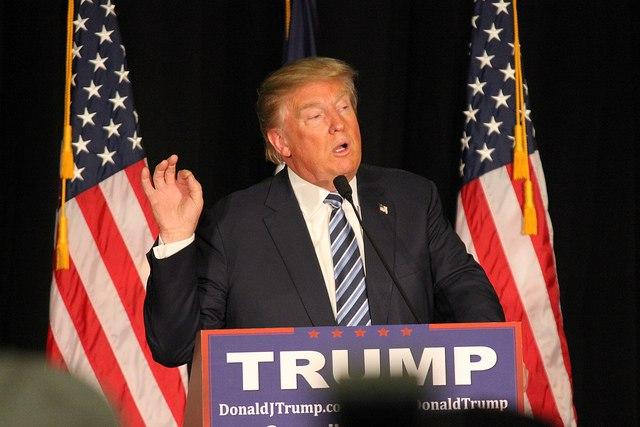

Donald Trump is widely known to be extremely rich. But just how rich is he? Forbes estimates his wealth to be $4.5 billion, ranking him at No. 113 for the United States. Trump, however, claimed in September 2015 that his net worth was $10 billion. Although the true value is a bit mysterious, the Trump brand is closely tied to wealth.
This makes it more mysterious that Trump claimed a New York state property-tax break with the STAR program. Oddly, to qualify for the tax break, a couple must earn under $500,000 annually. Trump received a $302 STAR tax break for his $5.2 million Trump Tower penthouse on Fifth Avenue on his most recent property tax bill.
New York City's Finance Department says it confirms that applicants of the STAR benefit earn under $500,000 annually with New York state tax authorities and applicants had to reapply several years ago. A spokesman for the New York State Department of Taxation and Finance said STAR recipients are even required to provide a social security number for the program. Clearly not a lot of billionaires are applying for the STAR program.
This certainly intensifies the mystery surrounding Trump's wealth. The GOP front-runner even said he's "really rich." It seems his net worth is quite mysterious due to his own actions, but perhaps that is his wish.
In a financial statement in June 2015, Trump claimed his net worth to be $8.7 billion, although this figure was not signed by an accounting firm. A mere one month later, Trump claimed in a press release that his net worth was more than "TEN BILLION DOLLARS."
"My net worth fluctuates, and it goes up and down with markets and with attitudes and with feelings, even my own feeling," Trump said in a December 2007 court deposition. This in fact seems to hit the nail on the head.
With lots of wealth tied up in real estate, Mr. Trump can legitimately lower his income by accelerating the depreciation rates on his properties. This in turn helps offset income.
Trump's annual property tax bill with the city is listed at $175,544, making it more understandable why he has a personal drive to cut taxes for the wealthy. Under the Trump tax plan, families earning more than $300,000 would see their taxes cut from 40 percent to 25 percent. He wants to eliminate the estate tax, which would have the biggest impact on heirs of millions. Mr. Trump also wants to cut back corporate and small business taxes by more than half to 15 percent. He also proposes modest cuts for the lower income levels.
Meanwhile, the $302 tax break under the STAR program continues to gain a lot of attention. Might Trump clear up the mystery by releasing his federal tax returns?
Editor's note: Donald Trump is a serial liar, rampant xenophobe, racist, misogynist, and bully.
Image Credit:Flickr/Matt Johnson